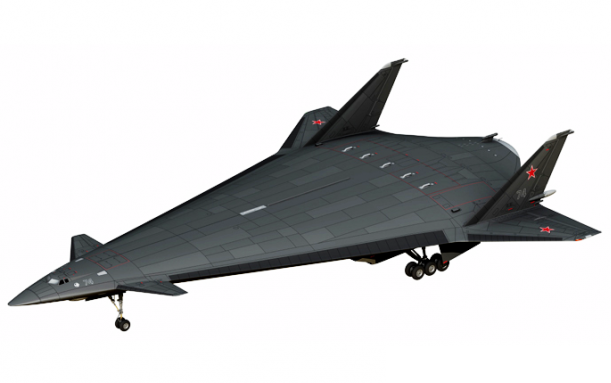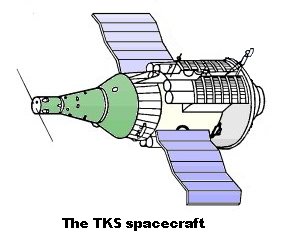The Maskirovka, part II
June 1977
It had been an unexpected side effect of that Proton disaster of April 1969. The toxic cloud of storable propellants had scared the military like hell, a threat they never forget. Many years later their Poisk commission tasked with the definition of future Soviet launch vehicles had been very clear:
say goodbye to storable-but-toxic propellants.
Civilian rockets didn't need them, since unlike ballistic missiles, they didn't have to be stored for decades in underground silos nor fired in a fraction of second during a nuclear attack. Kerosene, liquid hydrogen and liquid oxygen were begnin substances that would never contaminate a launch pad after a failure.
Consequences over the USSR space program were huge.
First, it meant civilian rockets could no long derive from ballistic missiles; their emancipation was now unavoidable.
Secondly, the Poisk recommandations seriously undermined Glushko position he had stubbornely held against the defunct Korolev, a position that had cost the Soviet Union the Moon.
Because the lunar rocket was huge - ten time bigger than the Proton that had caused so much damage in April 1969 - there was no way it could be loaded with toxic propellants. Glushko refused to admit that, and thus Korolev and its N-1 had to do without the best rocket engine designer in the Soviet Union.
Korolev had to hire aviation motorist Nikolai Kuznestov which NK-33 engines, although excellent, were too small. The N-1 took
thirty of them to fly, and that kludge proved unworkable, at least in time to beat America to the Moon.
Only Glushko could have designed an engine big enough, and he actually did it, but the huge RD-270 logically used storable propellants. Had a RD-270 powered lunar rocket ever failed like the 1969 Proton, the consequences would have been far more dramatic; it would have released, not hundred but
thousands of tons of extremely toxic propellants.
Glushko answer to that issue had been "Well, it will never fail in the first place, so your question is moot". The Proton disaster had proved him wrong, and he would pay the price for its stubborness.
Or would he ?
Glushko main quality was his faculty of adaptation. Back in 1974 the Poisk commission asked for a modular family of rockets to replace the Tsyklon, Soyuz and Proton. Competitors were Glushko (borrowing from Chelomei empire), Yangel (from Ukraine and another defunct rival of Korolev) and of course Chertok.
Glushko entered the competition with the Proton itself (a rocket he had stolen from Chelomei, courtesy of Ustinov), although logically modified to burn something better than the toxic propellants that scared the military.
Mishin successor Chertok proposed to cut the pyramid-shaped, four-stage N-1 (made of, from bottom to tip, the block -A, -B, -V and -G, respectively with -30, -8, -4 and -1 engines) into shorter and shorter launch vehicles. Western observers would have talked about a Lego booster; the Soviets saw it as the
Matryoshka doll rocket.
A N-1 cut of its huge first stage, the B-V-G booster was the N-11 and it would replace the Proton, launching 25 tons to earth orbit.
The V-G rocket called the N-111 was the Soyuz successor with a 10 ton payload.
That, of course, was the plan of paper, that worked perfectly. Reality was harder, notably for the smaller rockets in the family.
N-111 proved to be too weak, and fell by the wayside, and the Soyuz rocket survived the onslaught.
There was even a -G alone diminutive launch vehicle to replace the Tsyklon, with a single ton send into space. Tsyklon had been Yangel brainchild, and his Poisk proposal derived from that rocket, with the same issue faced by Glushko: dirty propellants. That rocket however was too small and it was the N-111 that replaced the Ukrainian launcher.
Rather unsuprisingly Chertok N-1 offsprings ended too powerful and the plan had to be tweaked. The N-11 thirteen engines made it overpowered, so a pair was cut of the first and second stages, resulting in the nine-engines, less powerful N-11M. The two pairs of engines could be easily reintroduced if the need ever arose.
To complicate matter further it was at that very moment that names were given to the new launch vehicles. The N-11 become
Groza (thunderstorm) and the N-11M,
Grom (thunder). The N-111 was named
Uragan Consideration was given to rename the N-1 itself, with the names
Energia,
Vulkan or
Kvant aparently suggested, but the proposal went nowhere.
As for Glushko, once again he went to see Ustinov.
"You gave me the best of Chelomei empire to rebuild my kingdom, and that was much appreciated. You gave me OKB-52 and with it I recovered Almaz, the TKS, and Proton - a space station, a manned ship, and the rocket to launch them. All fine, but at the root I'm a motorist."
"Hmm ?"
"I mean, all Poisk projects use Kuznestov NK-33."
"Yes, because they are superb engines even the Americans can't match."
"The Proton engines are nearly as good, you know."
"You mean, the RD-253
you designed a decade ago ?" Ustinov was a little fed up with Glushko continual whinning.
"You said it, not me." Glushko wrinkled.
"But your engines are burning what the military hate - toxic storable propellants."
"Of course, but I can tweak them to burn liquid oxygen and kerosene, like the NK-33. A backup to Kuznetsov would be quite desirable; unlike the N-1 many failures, the Proton flew a lot with my RD-253s... and I have previous experience changing engines from storable to kerolox via the RD-270 to RD-116 conversion. Please, let me run a trio of modified RD-253 on the bench."
What Glushko did not said Ustinov was that he intended to keep the Proton alive. Even if Chertok N-11 won the day he would have the engines to fly the Proton with liquid kerosene / oxygen, and then he would play all the flight experience amassed since 1965 against the N-11 paper project status. Much like the UR-700 and its RD-270 had been some years before, Proton and its RD-253 were Glushko tools to kill the N-1 and its offspring - tools he had *borrowed* from Chelomei, but it didn't mattered.
Glushko reached his objectives even better than in his wildest dreams. Such was the bad reputation of the N-1 that it somewhat tarnished its siblings; lack of confidence in Grom and Groza meant that Glushko modified Proton was held as a backup. In an overt mockery of Chertok Grom, Groza and Uragan meteorological monikers, Glushko had his own rocket renamed from the Russian word for snowstorm -
Buran. He reasonned that in any given year the Soviet Union had more snowstorms than hurricanes or thunderstorms altogether.
He also squeezed another new program out of Ustinov. The anti-satellite weapon he had inherited from Chelomei, the
Istrebitel Sputnik, was being upgraded for interception into geostationnary orbit. Its propulsion system had a truly outstanding performance, a necessity since the weapon had to make large maneuvers to catch its targets. In fact the performance was so good that a rocket upper stage called the
Briz had been build from the propulsion system.
And now Glushko foresaw another possible use for the
I.S / Briz. They could build a space tug out of it, a system similar to the American Agena; a vehicle able to shuttle between the space station and a low parking orbit. Any rocket in the world - from the tiny Soyuz to the huge N-1 - could launch a package on that parking orbit; and then the tug -
Parom - would catch the package and bring it back to the space station, or perhaps
much higher.
Building that Parom would be rather straightforward; it was just a matter of matching
I.S / Briz propulsion to Soyuz Igla and/or Kurs navigation, rendezvous and docking system. Glushko had heard that Keldysh and his math institute were repeating the same paranoid mistake they had done with the Shuttle. Keldysh saw the space tug as a possible anti-satellite weapon; and indeed the Agena could perform extremely large plane changes and climb to cislunar space or even dive into the atmosphere as a height of only 100 miles.
Fueling Keldysh paranoia were spies Christopher Boyce and Daulton Lee, who leaked data on TRW spy satellites; and that disgruntled CIA employee, Kampiles, who had stolen, and sold the Soviets a KH-11 manual. More leaks were coming through the civilian Agena program, which shed a limited light on the hundreds of Agena spy satellites launched over the years - the Corona and Gambit. That, and President Carter new under-secretary of defense (also the NRO boss) Hans Mark was a former NASA center director. Both the NRO and NASA used large numbers of Agenas, a fact that had not escaped Mark - nor Ustinov and Keldysh. In their view, the civilian space tug was only a cover for more KH-8 Gambits.
So Glushko, for all his whinning, never lacked work to keep his design bureau busy. As he left Ustinov office, the soviet rocket scientist briefly thought about an abandoned field of the space program: reusable space vehicles. Main effort there was limited to Chelomei reusable Merkur capsule of the TKS ferry ship. And that was it, or so.
MiG continued working on its Spiral at snail pace, with very little funding. The hypersonic aircraft first stage was gone, replaced by a mix and match of An-124 and rocket stages (or drop tanks) burning kerosene for density and hydrogen for pure energy, or perhaps a mix of the two to optimize performance - three propellants, if oxygen oxidizer was included. There was some American engineer with similar ideas, Robert Salkeld. Variant of the Spiral space planes had also been proposed for launch by classic rockets, with little success since the TKS and Soyuz already filled the space station ferry role pretty well.
Meanwhile Myasishchev was working on something even crazier, the M(G)-19
Gurkolyot, a nuclear ramjet hypersonic aircraft with some rocket engines to reach orbit. Myasishchev and Gurko (the veteran rocket scientist behind the M-19) answered critics about wiseness of flying a nuclear pile aboard an hypersonic machine by citing a new type of reactor, the Molten Salt, as safer than the usual solid core. The two engineers had jumped on a joint US-USSR nuclear cooperation program initiated in 1974. The international aspect helped making the M-19 more visible, a bold aplication of nuclear technology to the aerospace world.
Good for them. The lack of American shuttle, which already made
Spiral future bleak, should have buried the even-crazier M-19. Instead it stubbornely refused to die, and Glushko knew why.
Both projects were supported by Ministry of aviation Dementyev, which had ambiguous feelings to them. He supported these space planes in order to return space designs bureau to the aviation word (in his days, Krushchev had raided and looted aviation branches in favor of rocketry); accordingly, Dementyev did not wanted his aviation department to be overloaded with space works.
He has been lucky the American cancelled their shuttle, Glushko thought. Incidentally, Dementyev own son was deputy of Spiral program !
All this made Dementyev an ennemy of Greshko and Afanasyev, and de facto an ally of Ustinov - and himself, for that matter. It was the usual infighting between factions, the habitual, never ending business of Soviet matters.
Oh well.
The M(G)-19 Gurkolyot by talented artist Sentinel Chicken





